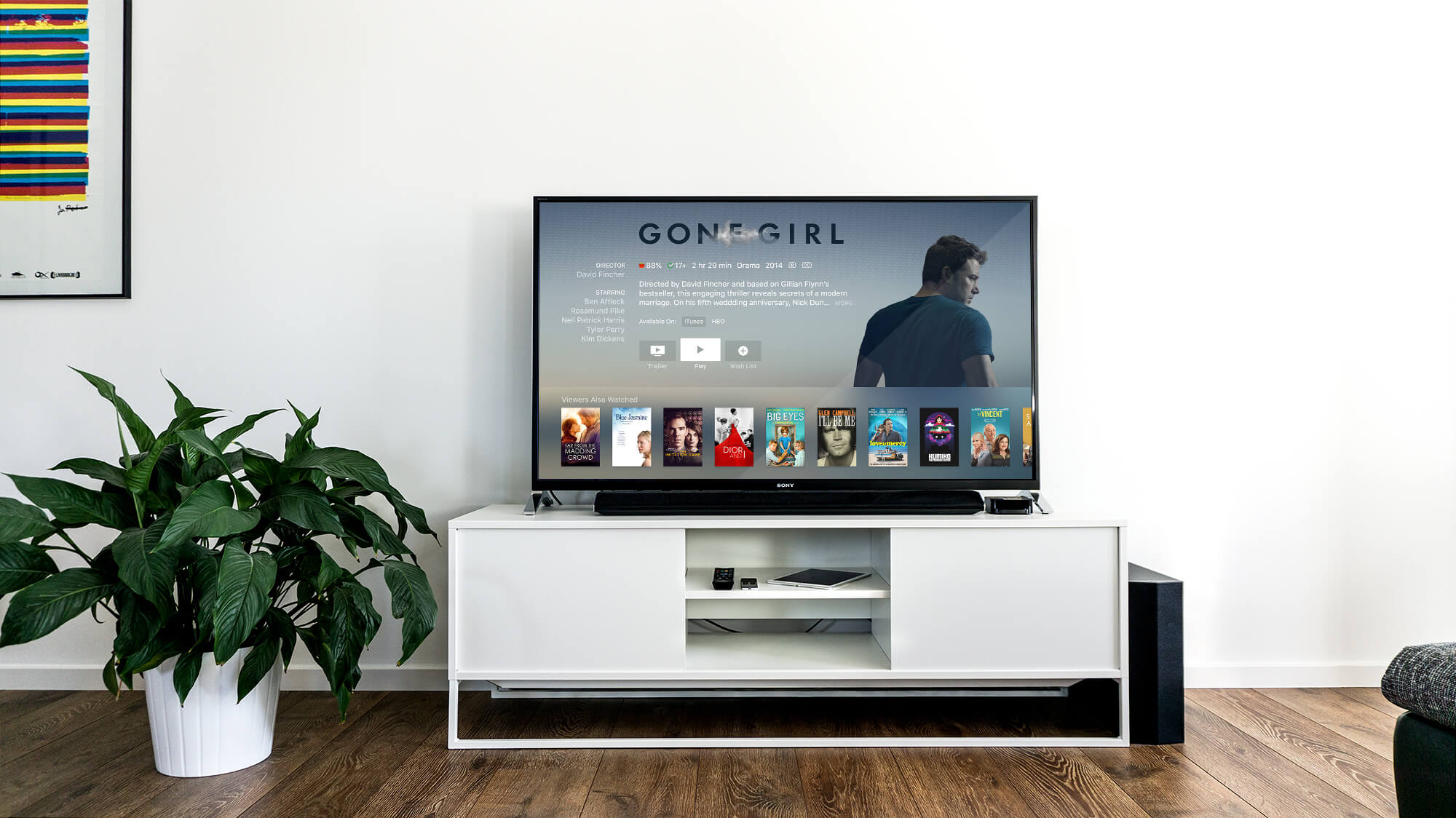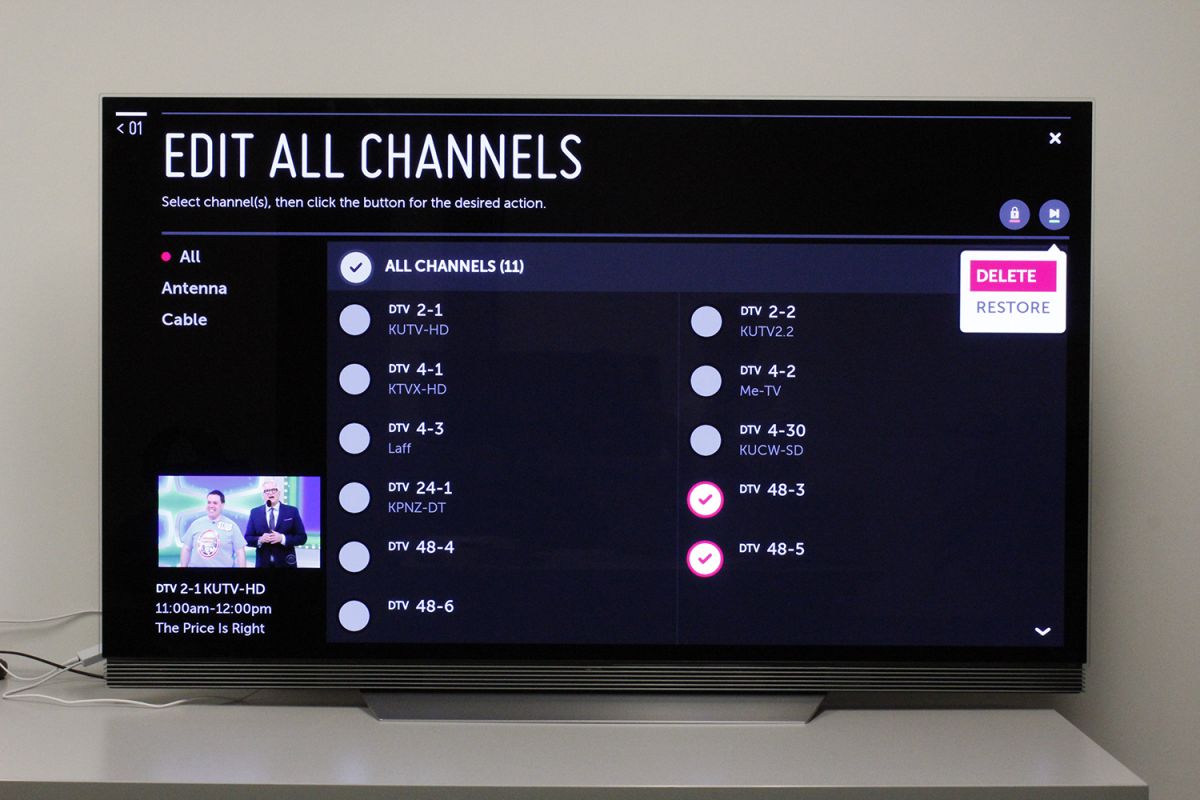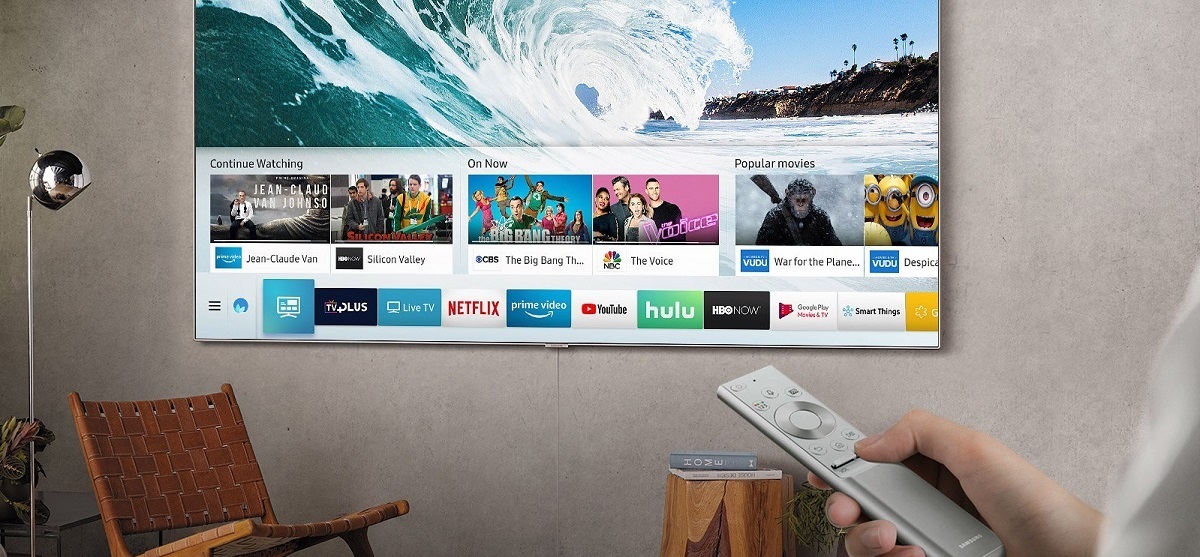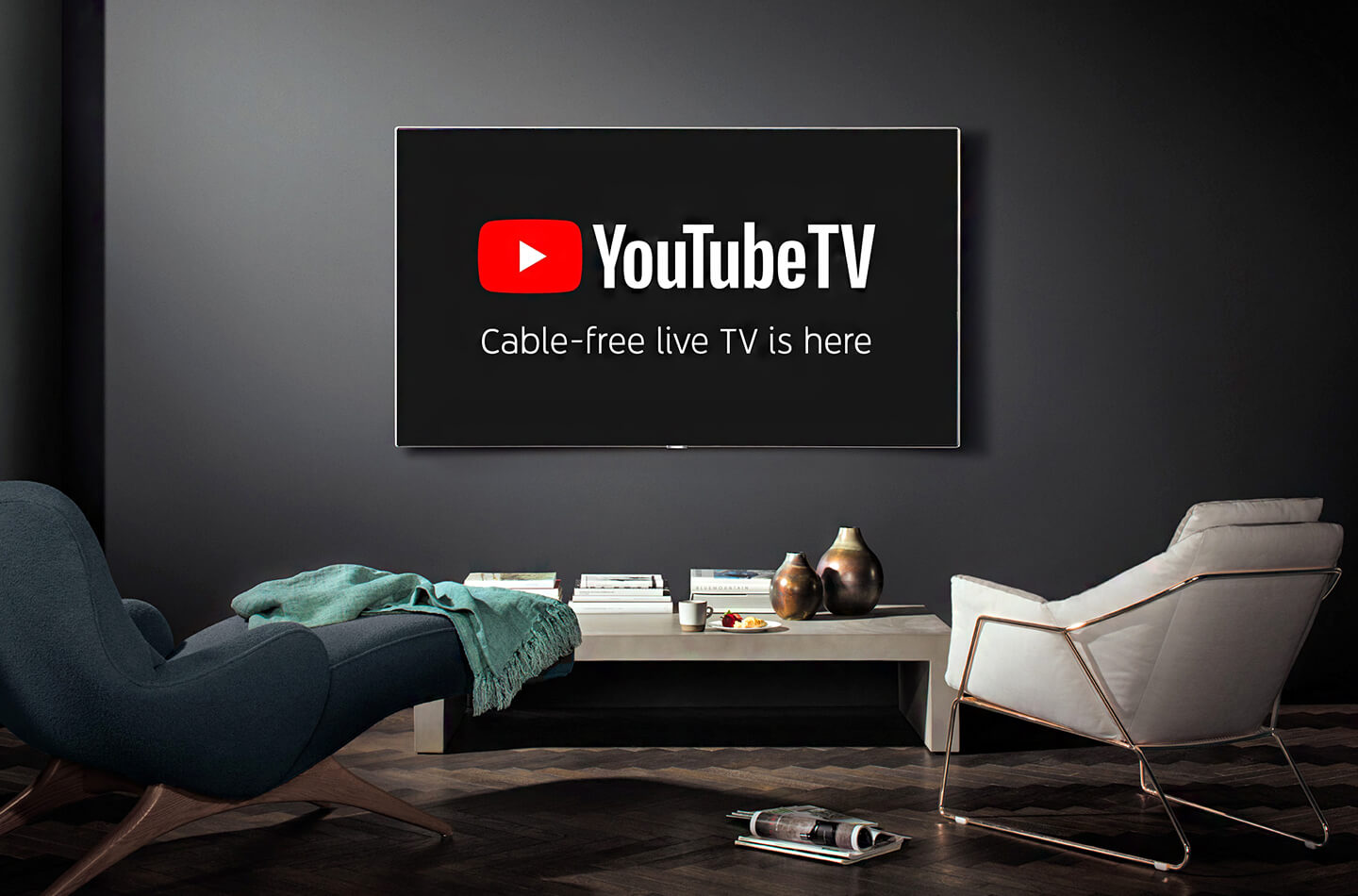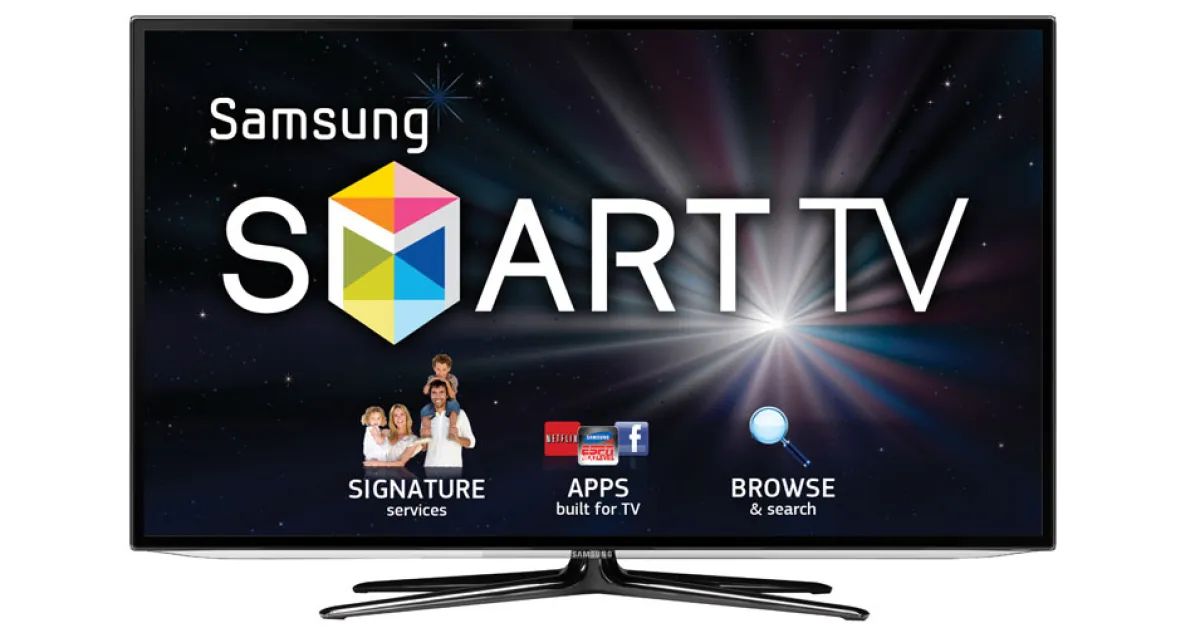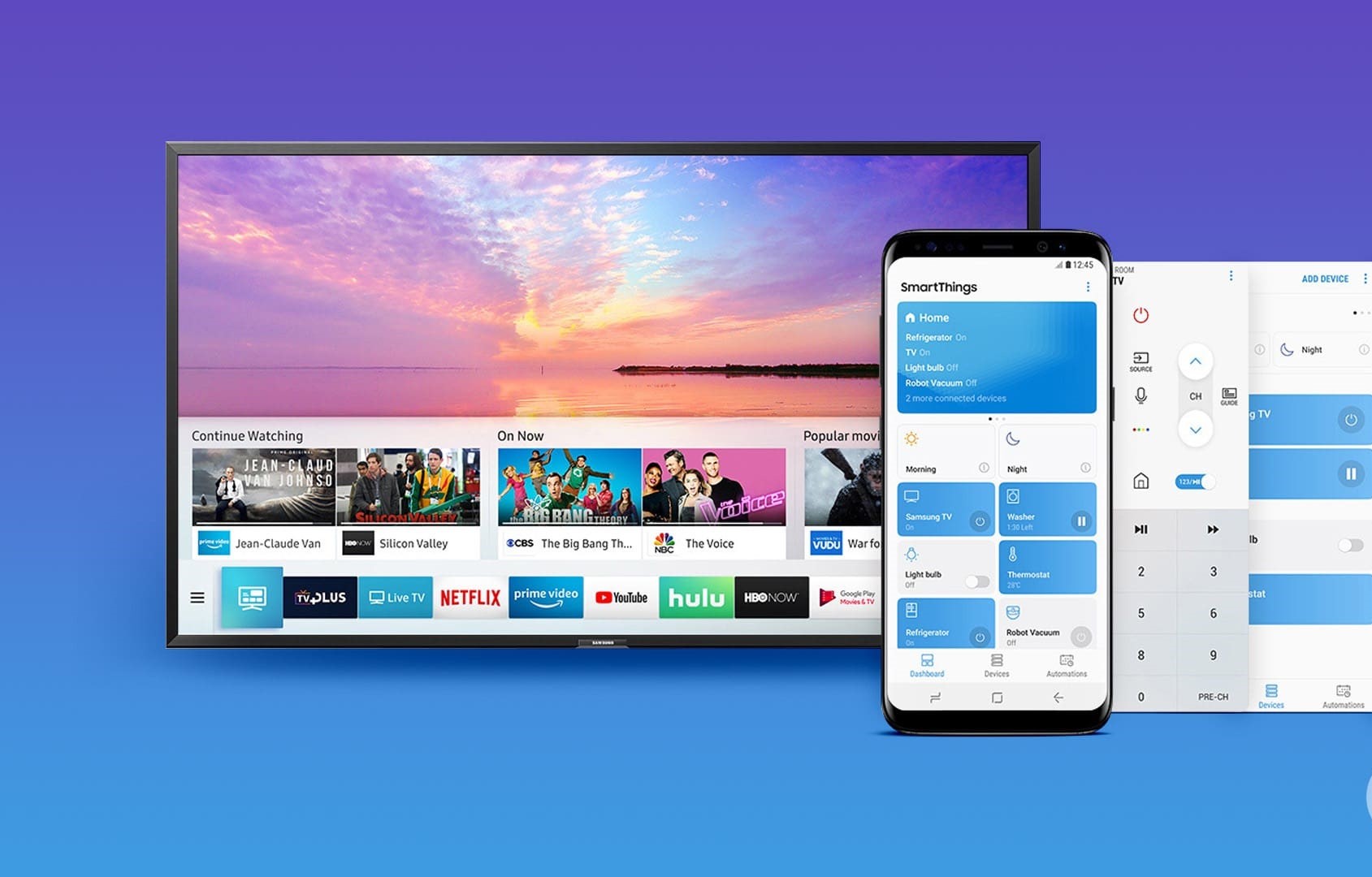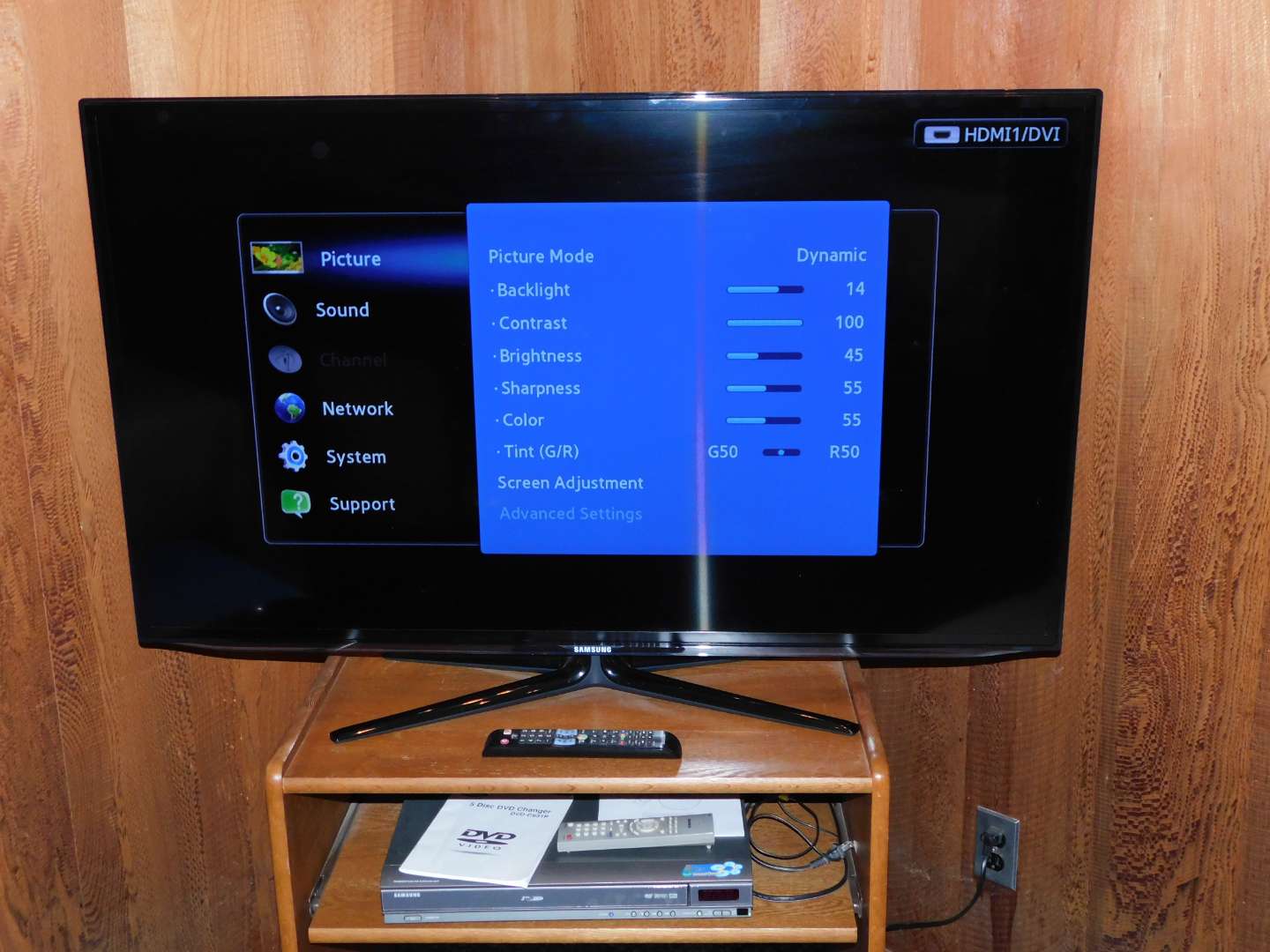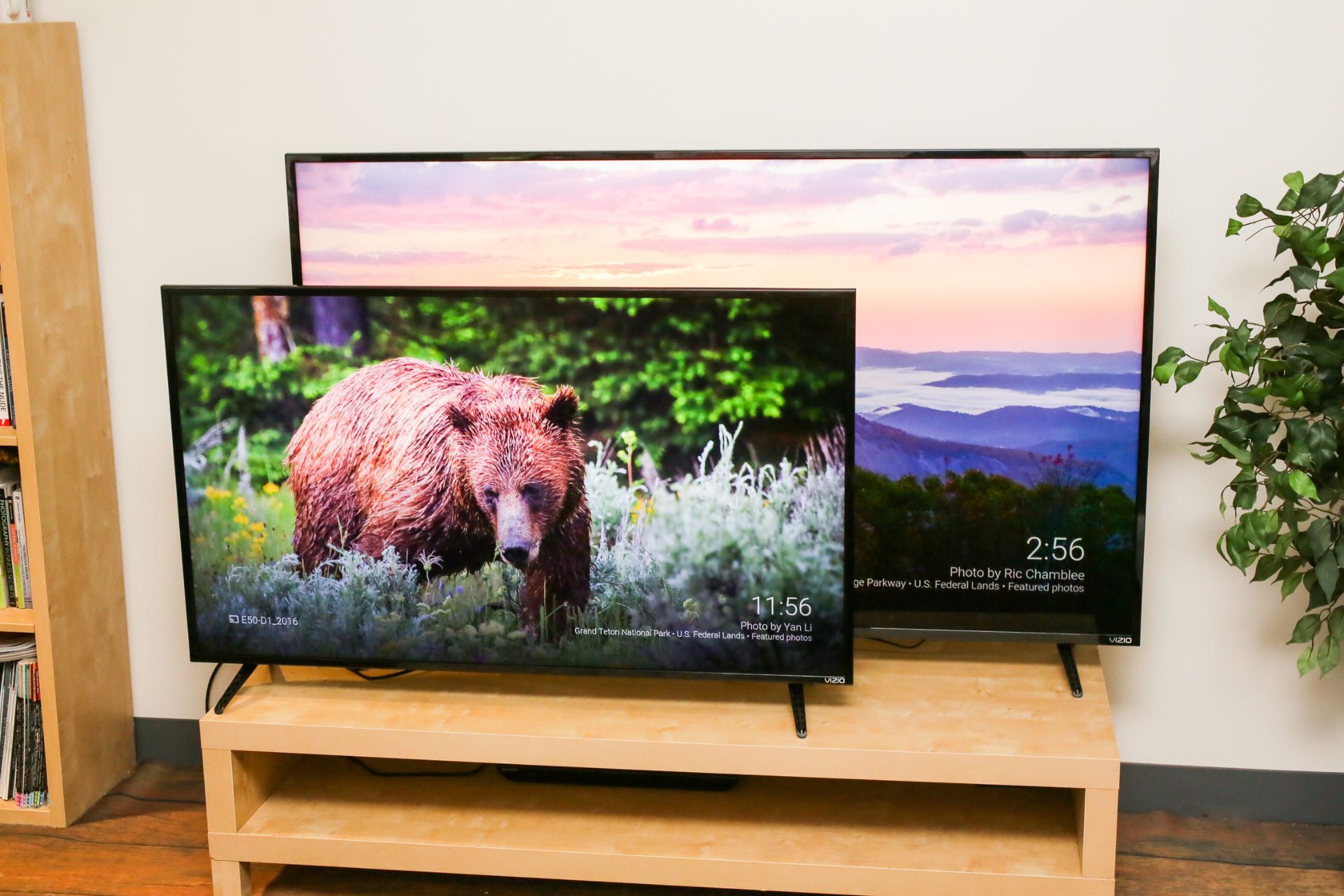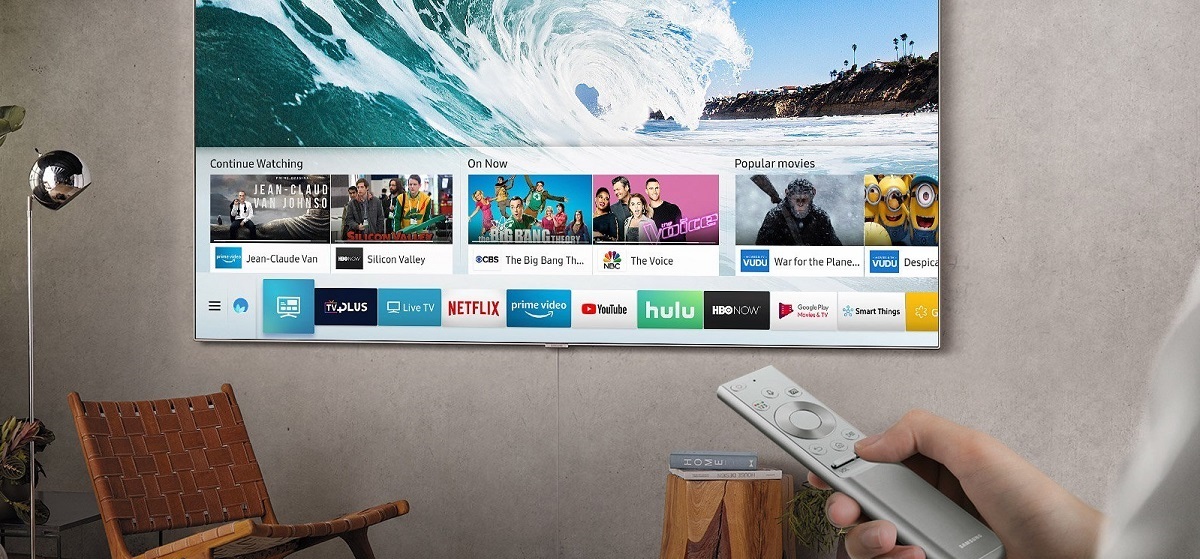Introduction
Welcome to the world of smart TVs, where you can enjoy a vast array of entertainment options right from the comfort of your living room. With their advanced features and internet connectivity, smart TVs have revolutionized the way we consume media. One of the key features that make smart TVs so appealing is their ability to play video files.
Whether you want to watch your favorite movies, TV shows, or home videos, knowing how to play video files on your smart TV is essential. In this article, we will explore the various methods to enjoy your video content on a smart TV.
Before we dive into the different methods, it’s important to know the compatible video formats for your smart TV. Smart TVs usually support popular video formats such as MP4, AVI, MKV, and MOV. However, it’s always a good idea to check the user manual or the manufacturer’s website for the exact list of supported formats for your specific smart TV model.
Once you have confirmed the compatible video formats, the next step is to connect your smart TV to external devices. Most smart TVs have multiple ports and connectivity options, allowing you to connect devices like gaming consoles, media players, or even your smartphone.
In the following sections, we will explore various methods of playing video files on your smart TV, including using USB drives, streaming from online platforms, using DLNA, transferring files via Wi-Fi Direct, and using HDMI connections. Each method has its advantages and can cater to different preferences and circumstances.
If you ever encounter any issues while playing video files on your smart TV, don’t worry! We will also address some common troubleshooting tips to help you resolve any playback problems.
By the end of this article, you will have a comprehensive understanding of how to play video files on your smart TV, making your entertainment experience even more enjoyable and convenient. So let’s get started and unlock the full potential of your smart TV!
Compatible Video Formats for Smart TV
When it comes to playing video files on your smart TV, it’s crucial to ensure that the video format is compatible. While most smart TVs have extensive format support, it’s always a good idea to double-check the supported formats to avoid any playback issues.
Common video formats that are widely supported by smart TVs include MP4, AVI, MKV, and MOV. MP4 is a versatile format that offers excellent compatibility across various devices and platforms. AVI is another popular format that provides good video and audio quality. MKV is known for its ability to store high-quality video and audio tracks within a single file. MOV, developed by Apple, is commonly used for QuickTime videos.
It’s important to note that the supported video formats may vary depending on the specific model and brand of your smart TV. Some smart TVs may support additional formats like WMV or FLV.
To ensure that your video files are compatible with your smart TV, you can simply check the user manual or visit the manufacturer’s website. They often provide a detailed list of supported formats, codecs, and resolutions.
In addition to the video format, smart TVs also require specific audio codecs for proper playback. Popular audio codecs include AAC, MP3, and Dolby Digital. It’s recommended to use audio codecs that are widely supported to ensure a seamless audio-visual experience.
If you have video files in unsupported formats, there are several ways to convert them to compatible formats. You can use video converter software available online or install dedicated apps on your smartphone that can transcode videos into the desired format.
By ensuring that your video files are in a compatible format, you can enjoy your favorite movies, TV shows, and home videos on your smart TV without any playback issues. So remember to check the supported video formats of your smart TV and convert your video files if necessary.
Connecting Your Smart TV to External Devices
One of the great advantages of a smart TV is its ability to connect to various external devices, expanding your entertainment options and allowing you to enjoy content from different sources. Whether it’s a gaming console, media player, or your smartphone, connecting external devices to your smart TV is a straightforward process.
Most smart TVs come equipped with different types of ports and connectivity options to cater to a wide range of devices. The most common ports found on smart TVs include HDMI, USB, Ethernet, and audio/video (AV) ports.
The HDMI port is widely used and offers the best video and audio quality. It’s the recommended method for connecting devices like gaming consoles, Blu-ray players, and media streaming devices to your smart TV. Simply connect one end of the HDMI cable to the HDMI output port of the external device and the other end to the HDMI input port of your smart TV.
If you have older devices that don’t have HDMI output, you can use the AV ports. These ports usually consist of three color-coded cables (yellow for video and red/white for audio) that connect to the corresponding ports on your smart TV.
Another popular option for connecting external devices to your smart TV is using the USB port. By connecting a USB drive or an external hard drive to your smart TV, you can directly access and play media files stored on the device. Simply plug in the USB drive into the USB port on your smart TV, and you’re ready to enjoy your favorite movies, videos, or music.
Ethernet connectivity is another important feature that enables your smart TV to connect to the internet using a wired connection. This allows you to stream online content, access apps, and enjoy media from various online platforms with a stable and reliable connection.
If you prefer a wireless connection, most smart TVs also come with built-in Wi-Fi capabilities. Simply connect your smart TV to your home Wi-Fi network through the network settings menu, and you can effortlessly stream media and access online content without the need for cables.
By understanding the connectivity options available on your smart TV and the ports on your external devices, you can easily connect them and unlock a whole new world of entertainment possibilities. So go ahead, connect your smart TV to your favorite devices, and enjoy a seamless and immersive viewing experience.
Using USB to Play Video Files on Smart TV
Playing video files on your smart TV using a USB drive is a convenient and straightforward method that allows you to enjoy your favorite videos, movies, and TV shows without the need for an internet connection.
The first step is to ensure that your smart TV has a USB port. Most modern smart TVs come equipped with at least one USB port for connecting external devices. Plug in your USB drive into the USB port on your smart TV, and it will typically be recognized automatically.
Once connected, navigate to the media or USB input on your smart TV using the remote control or on-screen menu. You should see the list of media files available on your USB drive.
Using the remote control, select the video file you want to play and press the “Play” button. Your smart TV will start playing the video file, and you can control the playback using the remote control, including pausing, rewinding, and adjusting the volume.
Most smart TVs support a wide range of video formats, including MP4, AVI, MKV, and MOV, which are commonly used for video files. However, it’s always a good idea to refer to your smart TV’s user manual or the manufacturer’s website to ensure compatibility with specific video formats.
Additionally, your smart TV may also support subtitles for video files. If your video file has embedded subtitles or a separate subtitle file in a compatible format (such as SRT or SUB), the smart TV will usually display the subtitles automatically. Make sure the subtitle file has the same name as the video file and is placed in the same directory on the USB drive to ensure proper synchronization.
Using a USB drive to play video files on your smart TV gives you the flexibility to access and enjoy your media collection without relying on an internet connection or streaming services. It’s a great option for watching your personal videos, home movies, or content stored on external devices.
Ensure that your USB drive is formatted in a compatible file system, such as FAT32 or exFAT, to ensure smooth playback on your smart TV. If you encounter any issues with playback or file recognition, try formatting your USB drive to a supported file system or using a different USB drive.
With the USB playback feature on your smart TV, you can easily enjoy your favorite videos directly from a USB drive, adding convenience and versatility to your entertainment experience.
Streaming Video Files on Smart TV
Streaming video files on your smart TV opens up a world of endless entertainment possibilities. By connecting your smart TV to the internet, you can access various streaming platforms, apps, and online content to enjoy a vast library of movies, TV shows, and videos.
The first step to streaming video files is connecting your smart TV to your home Wi-Fi network. Most smart TVs have built-in Wi-Fi capabilities, allowing you to easily connect to your network without the need for any additional equipment.
Once connected to the internet, navigate to the smart TV’s app store or the pre-installed app section. Here, you can find popular streaming apps such as Netflix, Hulu, Amazon Prime Video, YouTube, and many others. Download and install the desired streaming apps on your smart TV.
Launch the streaming app on your smart TV and sign in using your account credentials. Browse through the available content and select the video file you want to stream. The app will start playing the video file directly on your smart TV, providing a seamless streaming experience.
Many streaming apps offer additional features, such as personalized recommendations, advanced search options, and the ability to create watchlists. This allows you to easily discover new content and keep track of your favorite movies and TV shows.
One advantage of streaming video files on your smart TV is the ability to enjoy high-quality, on-demand content without the need for physical media or downloads. You can pause, rewind, or fast-forward the video playback using the smart TV remote control, giving you full control over your viewing experience.
It’s important to note that streaming video files on your smart TV requires a stable and reliable internet connection. For smooth streaming and uninterrupted playback, ensure that your internet connection is fast enough to handle the video quality and that your smart TV is within range of your Wi-Fi router.
Additionally, streaming services often require a subscription or may have certain fees associated with accessing premium content. Make sure to familiarize yourself with the terms and conditions of the streaming services and choose a subscription plan that suits your budget and preferences.
Streaming video files on your smart TV provides a convenient and flexible way to access a vast library of content from various streaming platforms. Whether you’re in the mood for a movie, your favorite TV show, or trending viral videos, your smart TV can be your gateway to endless entertainment possibilities.
Using DLNA to Play Video Files on Smart TV
DLNA (Digital Living Network Alliance) is a technology that allows you to stream media content from your computer or other compatible devices to your smart TV over a home network. With DLNA, you can easily play video files stored on your computer or other devices directly on your smart TV, providing a convenient way to enjoy your favorite content on the big screen.
To use DLNA, ensure that both your smart TV and the device you’re streaming from are connected to the same home network. This could be a Wi-Fi network or a wired Ethernet connection.
Next, check if your smart TV supports DLNA. Most smart TVs manufactured in the past few years have built-in DLNA functionality. You can find this information in the TV’s user manual or by navigating to the network settings on your smart TV.
On your computer, make sure DLNA streaming is enabled. This can usually be done through the media server software or settings on your computer. Popular media server software includes Windows Media Player, Plex, and Kodi. Set up the media server to allow sharing of video files.
Once everything is set up, navigate to the media or DLNA input on your smart TV. You should see a list of available DLNA servers on the network. Select the server that corresponds to your computer or the device with the video files you want to play.
Browse through the shared folders or directories on the DLNA server, and locate the video files you want to play. Select the desired video file, and your smart TV will start streaming and playing the video file on the screen.
DLNA supports a wide range of video formats, allowing you to play various file types such as MP4, AVI, MKV, and more. However, it’s always a good idea to check the supported formats for your specific smart TV model to ensure compatibility.
DLNA also supports features such as subtitles and fast-forward/rewind options, enabling you to fully control your video playback experience on the smart TV. You can use the TV remote or the on-screen controls to navigate through the video and adjust settings as needed.
Using DLNA to play video files on your smart TV allows you to access and enjoy the media content stored on your computer or other compatible devices without the need for complicated setups or additional cables. It’s a convenient way to seamlessly stream videos and take advantage of the multimedia capabilities of your smart TV.
Transferring Video Files to Smart TV via Wi-Fi Direct
Transferring video files to your smart TV via Wi-Fi Direct is a convenient method that allows you to wirelessly send media from your smartphone, tablet, or computer directly to the TV. With Wi-Fi Direct, you can enjoy your favorite videos and movies on the big screen without the need for cables or additional devices.
To use Wi-Fi Direct, make sure that both your smart TV and the device you’re transferring from (such as a smartphone) support this feature. Many modern smart TVs and mobile devices have built-in Wi-Fi Direct capabilities, which allow them to connect directly with each other without needing a Wi-Fi router.
On your smart TV, access the Wi-Fi Direct settings. This may vary depending on the TV model, but it is often located in the network or connectivity settings. Enable Wi-Fi Direct mode. The TV will then create a Wi-Fi Direct network that your other device can connect to.
On your smartphone (or other transferring device), navigate to the Wi-Fi settings and search for available networks. You should see the Wi-Fi Direct network created by your smart TV in the list of available networks. Connect your device to the TV’s Wi-Fi Direct network.
With both devices connected, open the media file you want to transfer on your smartphone or tablet. Look for the streaming or casting options in the media player app. You may find this as a small icon that resembles a TV or a cast button.
Select the Wi-Fi Direct option from the list of available devices to cast or stream the video file to your smart TV. The video will start playing on your smart TV screen, providing a wireless way to watch your favorite content.
Wi-Fi Direct offers a secure and direct connection between your device and smart TV, ensuring a stable and reliable transfer of video files. You can control the playback of the video file using your smartphone or tablet, allowing you to pause, rewind, or adjust the volume without the need for the TV remote.
It’s important to note that Wi-Fi Direct has limitations in terms of range. Ensure that your smartphone or tablet is within close proximity to your smart TV for optimal performance. Also, be aware that using Wi-Fi Direct for transferring large video files may consume a significant amount of battery life on your mobile device.
Transferring video files to your smart TV via Wi-Fi Direct eliminates the need for cables and external devices, providing a convenient and wireless way to enjoy your multimedia content on the big screen. So, grab your smartphone or tablet, connect it to your smart TV via Wi-Fi Direct, and enjoy a seamless streaming experience.
Using HDMI to Play Video Files on Smart TV
HDMI (High-Definition Multimedia Interface) is a widely used connectivity option for transmitting high-quality audio and video signals between devices. Using HDMI to play video files on your smart TV offers a reliable and straightforward method for enjoying your favorite movies, TV shows, and videos.
To use HDMI, you’ll need an HDMI cable that matches the HDMI ports on both your smart TV and the device you’re connecting to, such as a gaming console, Blu-ray player, or media streaming device.
Begin by connecting one end of the HDMI cable to the HDMI output port on your device, and the other end to an available HDMI input port on your smart TV. Make sure the cable is securely plugged in on both ends.
Using the remote control for your smart TV, change the input source to the corresponding HDMI port that you connected the device to. The smart TV should detect the device, and you will see the screen of the connected device displayed on your smart TV screen.
Now, navigate to the media or video player app on the connected device and select the video file you want to play. The video will be transmitted through the HDMI cable and displayed on your smart TV, providing a high-quality viewing experience.
HDMI supports a wide range of video and audio formats, making it compatible with most video files. Whether it’s MP4, AVI, MKV, or others, HDMI can transmit the necessary signals to your smart TV for seamless playback.
In addition to video, HDMI also carries audio signals. This means that you can enjoy the sound directly through your smart TV’s speakers or through a connected audio system, depending on your setup preferences.
HDMI offers several advantages for playing video files on your smart TV. It provides a reliable and high-quality connection that ensures minimal loss in audio and video quality. It also allows for easy control of playback using the device’s remote control, eliminating the need for multiple remotes.
Furthermore, HDMI allows for additional features such as support for 3D video, audio return channel (ARC) for audio playback through the TV’s speakers, and CEC (Consumer Electronics Control), which enables the control of multiple HDMI connected devices using a single remote control.
Using HDMI to play video files on your smart TV is a straightforward and versatile method that ensures high-quality video and audio playback. So, grab your HDMI cable, connect your devices, and immerse yourself in your favorite videos on the big screen of your smart TV.
Troubleshooting Common Issues with Video Playback on Smart TV
While playing video files on your smart TV can be a seamless and enjoyable experience, occasionally, you may encounter some issues that can disrupt your viewing experience. Here, we will discuss some common problems and provide troubleshooting tips to help you resolve them.
No Video or Blank Screen: If you encounter a situation where there is no video or a blank screen when playing a video file, start by checking the connection between your smart TV and the device you’re playing the file from. Ensure that the HDMI cables are securely plugged in, and if you’re using wireless streaming, make sure your Wi-Fi connection is stable. Additionally, double-check the input source on your smart TV and select the correct HDMI or media source.
No Sound or Audio Issues: If you can see the video but have no sound or experience audio issues, begin by checking the volume settings on both your smart TV and the connected device. Make sure the volume isn’t muted or turned down too low. If you’re using an external audio system, verify that it’s connected and powered on. Additionally, check the audio settings on your smart TV and ensure the correct audio output source is selected.
Poor Video Quality: If you notice a decrease in video quality or a blurry image, first check the resolution settings on your smart TV and adjust them to match the video file’s resolution. If streaming online, verify that your internet connection speed is sufficient for high-quality video playback. Sometimes, video quality issues can also be caused by outdated firmware on your smart TV. Check for any available firmware updates and install them if necessary.
Playback Freezing or Buffering: If your video playback freezes or buffers frequently, it’s usually due to a slow or unstable internet connection. Ensure that your Wi-Fi signal is strong, or connect your smart TV to the router via an Ethernet cable for a more stable connection. You can also try pausing the video for a few moments to allow it to buffer before resuming playback. If the issue persists, contact your internet service provider for assistance.
Subtitle Synchronization: If the subtitles are out of sync with the video, you can adjust the subtitle synchronization settings on your smart TV or the media player application you’re using. Most media players provide options to manually adjust the subtitle delay to ensure proper synchronization. Experiment with the settings until the subtitles align correctly with the dialogue on the screen.
Unsupported Video Format: If you encounter a situation where your smart TV does not support the video file format, you may need to convert the video file to a compatible format through third-party video converter software. Check the supported video file formats for your smart TV, and convert the video files accordingly before playing them.
If you’ve tried these troubleshooting tips and the issue persists, referring to your smart TV’s user manual or contacting the manufacturer’s customer support can provide further assistance in resolving specific playback issues.
By following these troubleshooting steps, you can overcome common video playback issues on your smart TV and ensure a smooth and enjoyable viewing experience.
Conclusion
Playing video files on your smart TV opens up a world of entertainment possibilities, allowing you to enjoy your favorite movies, TV shows, and videos on a larger screen with enhanced audio-visual quality. Throughout this article, we have explored various methods for playing video files on your smart TV, including using USB drives, streaming from online platforms, utilizing DLNA, transferring files via Wi-Fi Direct, and connecting devices through HDMI.
Understanding the compatible video formats for your smart TV is vital to ensure smooth playback. Knowing the supported formats, audio codecs, and resolution will help you organize and enjoy your media collection effectively. Additionally, utilizing the different connectivity options of your smart TV, such as USB, HDMI, Wi-Fi Direct, and DLNA, allows for greater accessibility and convenience when playing video files.
Despite the advanced technology and user-friendly features of smart TVs, issues with video playback can still arise. We have provided troubleshooting tips for common problems you may encounter, including no video or sound, poor video quality, buffering, subtitle synchronization, and unsupported formats. By following these troubleshooting steps, you can resolve these issues and have an uninterrupted viewing experience.
In conclusion, playing video files on your smart TV offers endless opportunities for entertainment and convenience. Whether you choose to connect devices through HDMI, stream from online platforms, transfer files via Wi-Fi Direct, or use other methods, your smart TV can transform into a powerful media hub.
Now that you are equipped with the knowledge to play video files on your smart TV and troubleshoot common issues, you can fully enjoy the immersive experience of watching your favorite content on the big screen. So, gather your video files, grab your remote, and let your smart TV elevate your entertainment experience.







